Weapons Systems Tuning Group Reunion
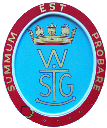
© WSTG Reunion Committee 2016
Go to top of page
George Scutt
A Career in Communications in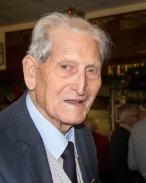 War and Peace Time
War and Peace Time
George is another past member of WSTG who we knew had an interesting life story to tell; therefore, on 23rd March Ken and I joined Eileen and George in their lounge and recorded the following story.
George Scutt was born on the 4 July 1921 in Chichester and continued to live and complete his education in the city.
On leaving school he first worked as an apprentice with an electrical contractor who also had two radio shops in the area, but the business failed and George, being left “high and dry”, briefly worked in a brewery!
In 1939 it was obvious to George and many others that a war was likely with Germany and on 21st Feb 1939 he and two of his pals decided to apply to join the Royal Navy. One of them was rejected because of colour blindness, later joining as a telegraphist, the other two joined as ordinary seamen. After initial training at Whale Island, HMS Victory and HMS Vernon they decided to transfer to the telegraphist branch and in May 1939 joined their friend. More training, and testing was now required, this being carried out at HMS Victory (Signal School). George at this time was to achieve a 100% test result; in his words: “for the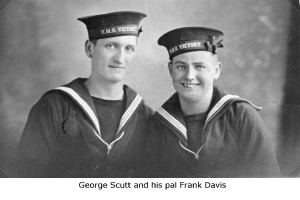 first and only time”.
first and only time”.
He was now posted to his first ship HMS Effingham an improved Birmingham class Cruiser.
In the spring of 1940 both the UK and Germany planned an invasion of Norway but Germany struck first and the allies had to use the RN to ferry troops to Norway. A task force including HMS Effingham, that had embarked 1000 troops with equipment, sailed for Bodo in Norway. Taking a short cut both HMS Matabele and HMS Effingham ran aground on Folksen shoal. With our George on board, the ship was badly damaged and after landing the crew and the troops, but no equipment, she had to be sunk three days later by our own gunfire.
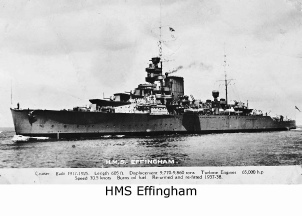 George was sent ashore as a coder to make use of his Comms skills. He was accommodated in a furniture shop and then a school with an oerlikon gun hammering away close by at the Luftwaffe that repeatedly attacked the British positions. Feeling the cold at night in these uncomfortable conditions he described how he was grateful to use heavy white camouflage coats discarded by the army due to their weight. When the decision was made to evacuate allied forces from Norway he embarked on a Polish ship with about 1000 French Legionnaires. The Luftwaffe also attacked this ship; however George's main complaint was that the bread was so mouldy that only the centre was edible!
George was sent ashore as a coder to make use of his Comms skills. He was accommodated in a furniture shop and then a school with an oerlikon gun hammering away close by at the Luftwaffe that repeatedly attacked the British positions. Feeling the cold at night in these uncomfortable conditions he described how he was grateful to use heavy white camouflage coats discarded by the army due to their weight. When the decision was made to evacuate allied forces from Norway he embarked on a Polish ship with about 1000 French Legionnaires. The Luftwaffe also attacked this ship; however George's main complaint was that the bread was so mouldy that only the centre was edible!
After the Norway episode George joined MS Aberdonian, an elderly passenger cargo ship taken up by the Admiralty for use as coastal Forces depot ship. After refitting in London docks during the blitz she was deployed on the 11 April 1941 to Fort William on the West coast of Scotland as a depot ship for MTBs. Once again he was subjected to the Luftwaffe's attention as they attempted to bomb the local hydro-
He was not long on the old ship as he was detailed for submarine training and joined HMS Dolphin in Sept 1941. George explained that although being detailed to train as a submariner he could after the four weeks at HMS Dolphin go back to General Service if he so wished. However George decided that it was not too bad and so decided to stay in submarines, although he said that he was aware that many submarines were being lost. In fact, there were so many losses that the public were not informed of them until many months after they occurred because of the impact on morale.
I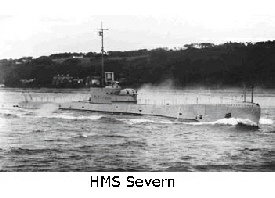 n February 1942, after completing his training he joined HMS Severn, a 2500-
n February 1942, after completing his training he joined HMS Severn, a 2500-
A bit of luck now for George: it was decided that HMS Severn would go to the States for a 6 month refit, from April of1942. He picked up his leading telegraphist rate and celebrated his 21st birthday in Philadelphia, the refit port.
It was here that George did a bit of “James Bond work” as he collaborated with some US scientists on the then new infrared detection technology. Working in strange places such as the top floor of a hotel and other questionable locations where line if sight communications were possible, he was told that “he was on his own if he was rumbled” working with his Aldis lamp!
After refitting, Severn’s first patrol was off the North Cape, which George described as freezing, with ice on the superstructure being a problem.
One Sunday during this patrol the boat suddenly dived steeply and just as quickly surfaced after blowing all tanks. Again she dived but as the air had been used to surface once, now little was available. George, positioned in the control room, watched the depth gauge creep down to 285 ft [safe diving depth 200ft]! When the boat eventually surfaced it was found that the after hydroplane was jamming. They returned to Glasgow for repairs and here George got appendicitis -
Fate took him to his next posting: the PO Tel. on HMS Trenchant had gone sick and on the 12 May 1944, George got a “pier head jump” to join that boat. She was Chatham built, and commissioned 31 Jan 1944.
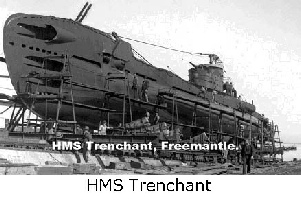 Her commanding officer was Lt Cdr Hezlet, who, with his crew, was to become famous for exploits in the Japanese War. George described him as a very strict, but fair man who was known to remove any man from the boat if he felt they were not pulling their weight.
Her commanding officer was Lt Cdr Hezlet, who, with his crew, was to become famous for exploits in the Japanese War. George described him as a very strict, but fair man who was known to remove any man from the boat if he felt they were not pulling their weight.
In May 1944 HMS Trenchant left on a two-
In an area of unrestricted submarine warfare, gunfire and even ramming sank many smaller vessels. However the action off Penang in the straits of Malacca, on 23 September 1944, involved torpedoes. A Type 1XD2-
The very lucky prisoners were to show their gratitude for being picked up by getting Trenchant’s German-
HMS Trenchant undertook other successful task around this period that included landing commandos to destroy a bridge on the River Kwai and the last attack of the war using two-
The attack occurred on 27 October 1944: Lt Cdr Hezlet, who had gained much experience with the midget submarines in earlier years, skilfully manoeuvred Trenchant to launch two of them on a mission “tantamount to suicide” in the Japanese-
HMS Trenchant's base was Freemantle in Australia and unlike the US submarines she was able to transit to Australia via the shallow channel east of Sumatra due to her requirement for only 40ft clearance for her periscope.
Back off Sumatra, HMS Trenchant’s most famous action occurred on the 8th June 1945, in the Banka Straits. A US submarine reported the presence of the cruiser IJN Ashigara and escort destroyer Kamikaze. Cdr Hezlet took Trenchant through the harbour defences in a plan to ambush the Japanese ships. Kamikaze did in fact detect the Trenchant and fired at her, but had to turn away from a torpedo fired by Trenchant!
At 1148hrs Ashigara was seen and 8 torpedoes from the bow tubes were fired at her, five of which hit their target. The stricken cruiser fired at Trenchant’s periscope as C.O. Hezlet allowed his crew, including George to view the scene as the Ashigara capsized.
HMS Trenchant did not pick up any survivors on this occasion, but George did
recall that in another action when they sank a Japanese ammunition ship, 14 very reluctant Japanese were rescued. He explained that Japanese prisoner “were difficult” and although one in this group did die, the others “bucked up” when fed tinned pears, as by this stage of the war their rations were not good.
The sinking of such an important cruiser made HMS Trenchant famous and she set off for Manila for celebrations and decorations. George showed us an original sheet of all the signals received by Trenchant (see below, click on the image for a larger version or see the transcript at the foot of this page) and his copy of the document when he was  mentioned in despatches.
mentioned in despatches.
A treat for the crew was a concert party from the ‘States performing Oklahoma, unfortunately ten minutes into the performance the heavens opened and it was abandoned. George said he caught up with Oklahoma after he married Eileen.
B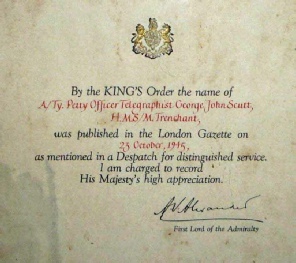 ack in action on the 13th July 1945 a 15 ton schooner was stopped, at which point the native crew abandoned ship but 4 Japanese soldiers and an officer fought back so the schooner, unfortunately, had to be sunk by gunfire with them still on board.
ack in action on the 13th July 1945 a 15 ton schooner was stopped, at which point the native crew abandoned ship but 4 Japanese soldiers and an officer fought back so the schooner, unfortunately, had to be sunk by gunfire with them still on board.
George then recounted the role he played when the US air force deployed B29 Super-
Back in Freemantle George took leave and went on a trip with the local post-
HMS Trenchant returned to Portsmouth for a well-
After a short period with Lec (refrigeration), George decided to seek employment with the Admiralty and went to work at Funtington airfield in the mobile radio group. Here he met up with Norman Dibley late of the Fleet Air Arm and an old Chichester pal, and Eric Shoesmith DSM. All three of them were “Radio Mechs” and would eventually become members of WSTG.
New Years Eve 1946 proved to be another landmark in his life as he celebrated the occasion with two young ladies. He was to escort one home but she let Eileen (the other one) take-
In 1954 all radio/electronics groups came into No 2 shop in Portsmouth dockyard where George worked in the Radio Equipment Section on HF and UHF Communications equipments, Radar and Asdic (Sonar) equipments, both “Afloat” and in the “Shop”. He was also involved in establishing the Standards Laboratory, and had the task of putting the foreman’s (Max Peddar’s) ideas of what was needed into practice. By this time George had been a diagnostician (TG3) for a few years.
Like many young men of this era George volunteered for “foreign service” in one of HM Dockyards abroad. In August 1957 the family sailed for Hong Kong, but the contraction of the UK’s ship fitting assets was about to begin, and this foreign tour was to end with a transfer to Gibraltar following the closure of Hong Kong.
In August 1961 George joined WSTG on promotion to TG2 (PTO3) as they recruited heavily for the new classes of warships; he once again worked in the Comms Section on many RN craft specialising in a number of HF – UHF equipments.
D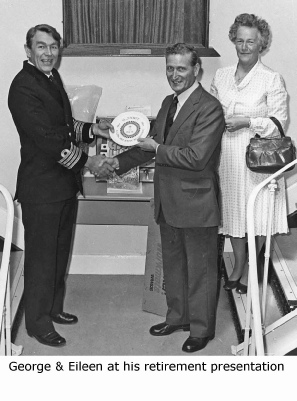 uring his service with WSTG George was promoted to PTO2 and retired in that grade on 3 July 1981.
uring his service with WSTG George was promoted to PTO2 and retired in that grade on 3 July 1981.
Eileen and George obviously did not reckon on a quiet time in retirement as in the last thirty years they have travelled the globe. Souvenir plates adorn the walls of the lounge, the Taj mahal; Inca kings, the Serengeti and his favourite place Kenya with its safari parks are all remembered. They returned from Kenya again earlier this year, having enjoyed another of many visits, despite the attendant travel difficulties and George developing a hernia -
Addendum -
Signals to HMS Trenchant
June 8th 1945 1039
The following messages of congratulations on the sinking of the Cruiser have been received.
************************************************
FROM ADMIRALTY
Please inform Trenchant that the Cabinet expressed the greatest pleasure when the sinking of the Japanese Cruiser was reported at their meeting on Monday evening (118147)
FROM COMMANDER IN CHIEF PACIFIC FLEET (ADMIRAL NIMITZ)
Congratulations to Trenchant on sinking one of the few remaining enemy cruisers
FROM COMMANDER IN CHIEF BRITISH PACIFIC FLEET (ADMIRAL BRUCE FRASER)
My very best congratulations, well done.
FROM COMMANDER 7TH FLEET (ADMIRAL KINKAID U.S.N.)
Congratulations and well done to the Trenchant for sinking one of the last JAP heavy cruisers in the South West Pacific area. A difficult and most courageous attack well executed.
FROM COMMANDER SUBMARINES PACIFIC (VICE ADMIRAL LOCKWOOD U.S.N.)
Please extend to Commanding Officer of Trenchant my congratulations and those of the entire submarine force on his work of adding to the Japanese Under Sea Fleet.
FROM COMMANDER TASK FORCE 71 (ADMIRAL FIFE U.S.N.)
(OF WHICH TRENCHANT IS PART)
The admiration of all of us goes out to Hezlet and Trenchant as one ship, a force in eliminating major Jap unit in one of the toughest spots in the entire area to get off torpedoes hot and to get clear. You have avenged Exeter and Houston by your smart aggressive assistance, the heavy cruiser you have sunk has been effectively used by the enemy in pinning down our surface forces to watch him.
FROM CAPT S/M 4TH SUBMARINE FLOTILLA (CAPTAIN IONIDES)
Well done indeed. We are proud of you.
FROM U.S.S. PUFFER
Heartiest Congratulations on sinking of heavy cruiser.
CORR!!!
Ivan 25/03/2010/ revised 15/04/10
George pictured at our 2015 Christmas Reunion